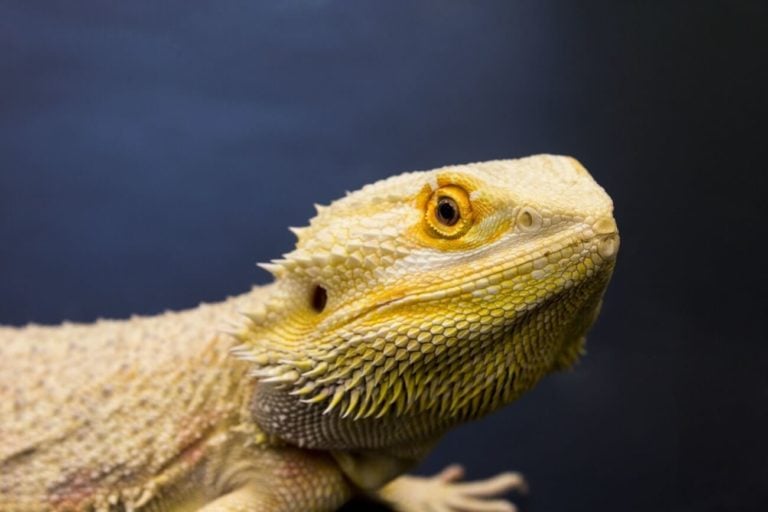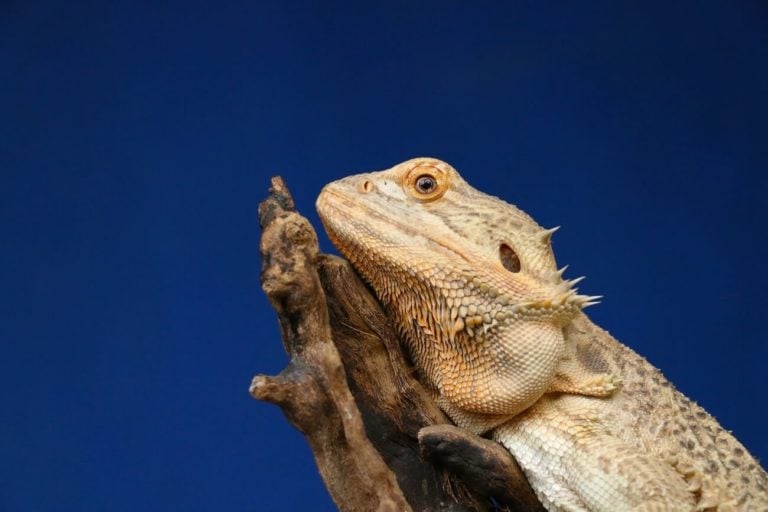There are so many amazing types of geckos that it can be hard to decide which species you want as a pet. In fact, one of the most common questions we get from our readers is regarding what type to choose!
So to make things easy, we put together this helpful list to make your decision easier. It covers all of the best types of pet geckos, with handy information about each.
Let’s begin!
Mediterranean House Gecko
Lovingly referred to as the moon gecko, this pint-sized reptile is a nocturnal species. They are most-active a couple of hours after midnight. Like other night-dwellers, they’re also attracted to light and will hand around sources in hopes of catching wandering food!
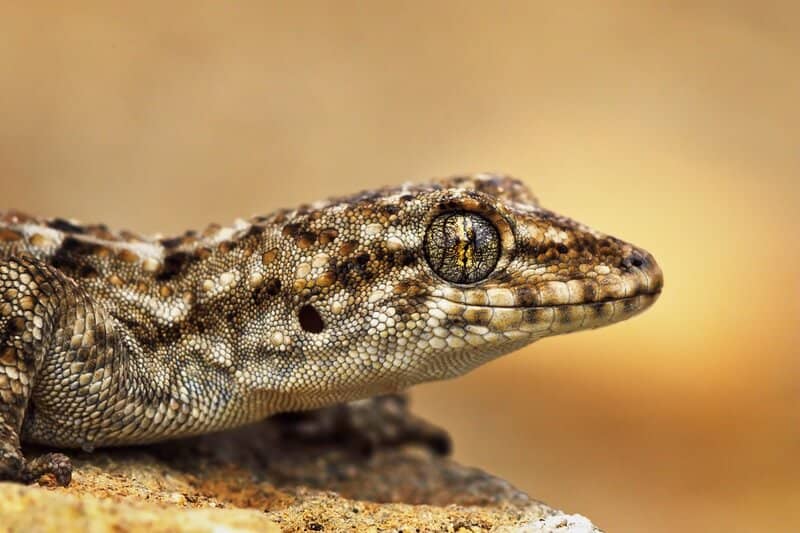
The Mediterranean house gecko is sporting tan-colored skin and black spots. Some specimens have splotches of purple, too. All lizards have lidless eyes and long, tactile digits that help them navigate the world.
As their name would imply, this type of gecko is native to the Mediterranean region. Their natural distribution is widespread, preferring to stick close to coastal areas with plenty of places to shelter.
Thanks to their popularity in the trade, the Mediterranean house gecko is frequently bred in captivity. They’re readily available in most countries around the globe. The species likes to keep a low profile and is naturally resistant to pesticides. As a result, wild populations are thriving!
Leopard Gecko
Leopard geckos are, by far, one of the most popular species in the trade. Docile and easy-going, they’re a fantastic pet for herpetology enthusiasts of any skill level. Plus, they don’t require massive enclosures to stay happy.
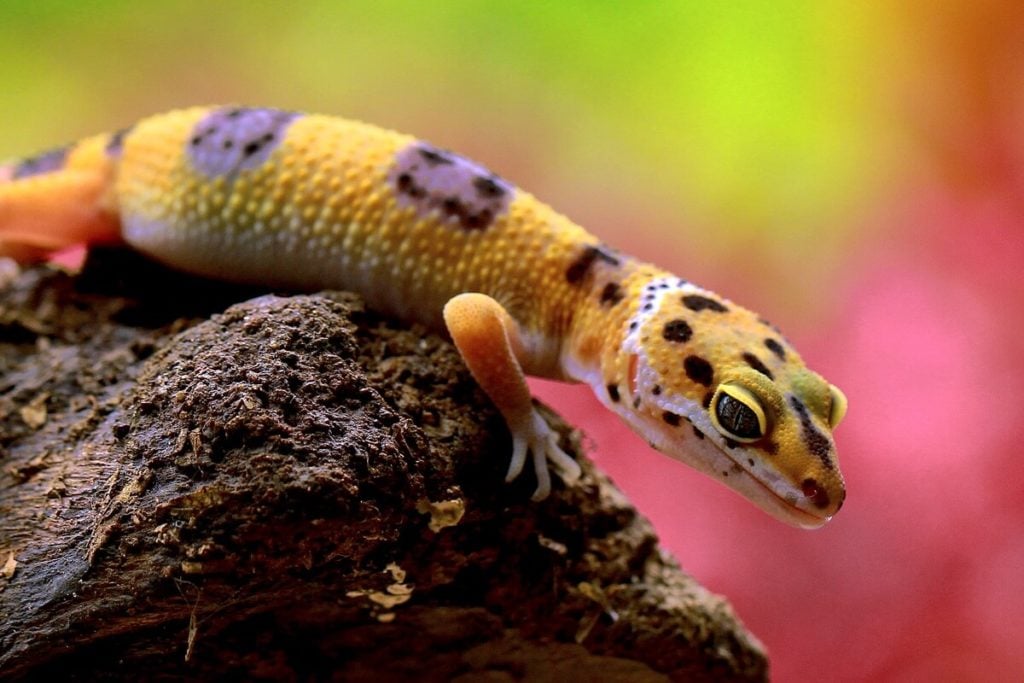
The body of the leopard gecko is tannish-yellow. Several black or brown spots cover the base color, creating a familiar pattern that’s reminiscent of the powerful feline.
Interestingly enough, leopard geckos don’t have the rounded toe pads that other types of geckos do. As a result, you won’t find them climbing the walls of your enclosure.
Another unique trait is their eyelids. Most types of gecko species lack discernible eyelids, so it’s a distinct characteristic that makes for a very emotive lizard!
Leopard geckos are quite easy to care for, making them a great choice for beginners. They require very little in terms of decorations. They prefer rocks and small logs in lieu of massive climbing branches. The reptiles are very accepting of most foods, too. They prefer insects like crickets and grub worms.
Yellow-Headed Day Gecko
This eye-catching gecko is a member of the day gecko family. They’re the smallest in the subgroup. But, they’re certainly one of the most identifiable, too.
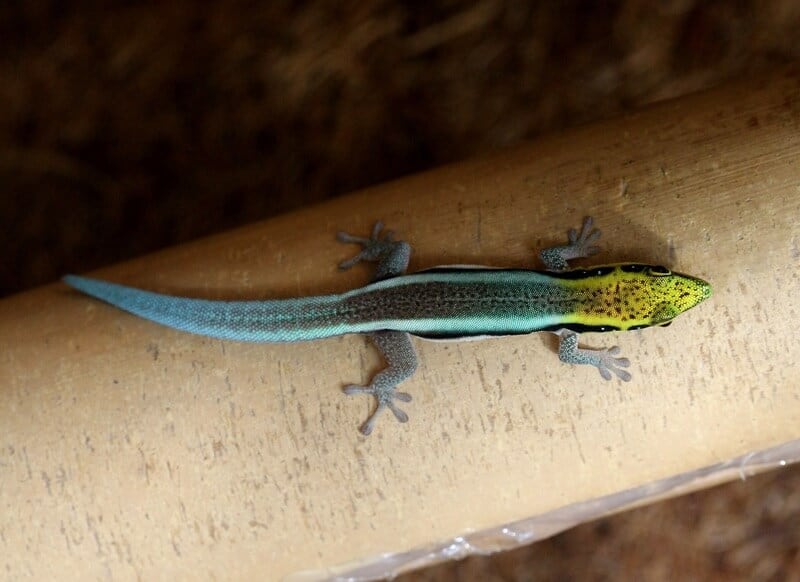
This pet gecko species is brightly colored, featuring hues of vibrant yellow on the head. Light brown spots line the lower back while energetic turquoise covers the lower back and tail. The colored details come to life thanks to the flattened shape of the body.
In terms of behavior, these tiny creatures are very active! They’re diurnal and take advantage of all the time and space they have. This gecko species does best in a vivarium filled with plants and natural decor. Their coloration pops in natural-looking environments.
Not only that, but they find more activities to stay occupied.
Yellow-headed day geckos are best appreciated through the glass. They’re a lot more fragile than some other types of gecko species. With their rather skittish behavior, frequent handling is something you should avoid.
White-Lined Gecko
White-lined geckos are a lively species with a well-defined pattern. Most of the body is dark tan, green, or brown. But strong white lines accent their frame, creating a severe look that stands out.
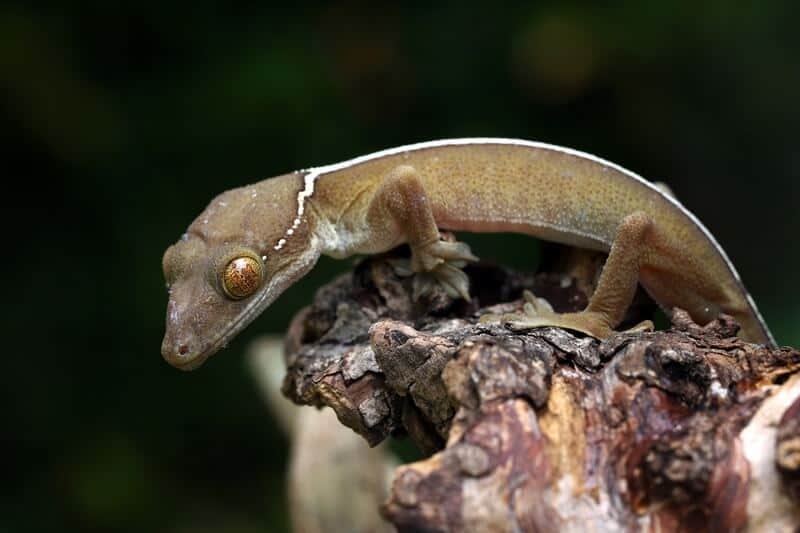
While not as temperamental as some other types of geckos, white-lined geckos are still capable of biting. They are agile escape artists and will quickly flee the scene if you try to hold them. If they feel threatened, don’t be surprised if they try to bite!
This species is one that you should not handle unless it’s completely necessary. They prefer to be observed through the safety of their enclosure’s glass.
In terms of environment, white-lined geckos like things natural and lively. A mix of live plants, vines, and climbing branches are a must. A habitat that mimics their native land makes them feel more secure, which may help to keep aggressive and anxious behavior at bay.
Gargoyle Gecko
Take one look at the gargoyle gecko, and their trade name will suddenly make sense! The medium-sized pet gecko features splotchy skin with touches of gray, black, brown, and white. Subtle accents of orange, yellow, and red are possible, too.
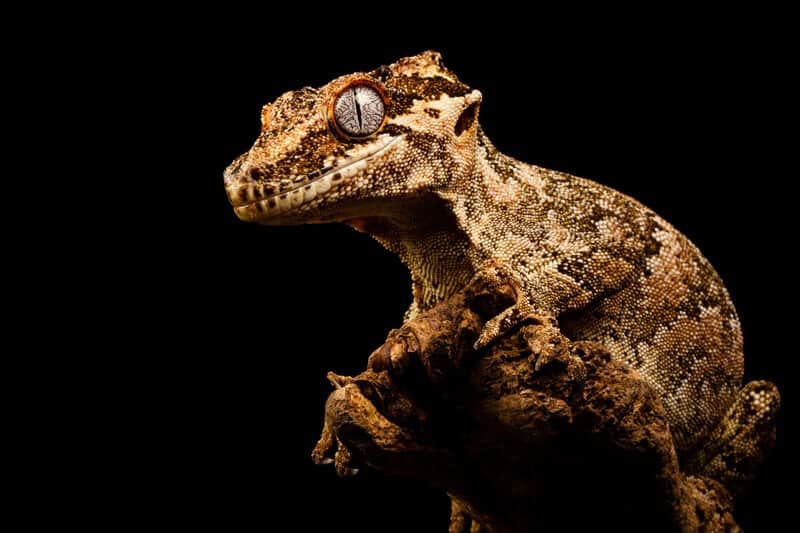
The triangular-shaped head is prominent. The most defining feature on the head is the eyes! Large and bulbous, the eyes provide a somewhat menacing appearance. They’re usually gray in color and feature a vertical slit, which only pushes the statuesque look even further.
Don’t let the intimidating looks of this reptile fool you. It’s actually quite peaceful and doesn’t mind occasional handling from humans. They don’t like it when you constrain them. But if you allow them to crawl on your hands freely, they will enjoy the experience.
The only time you’d have to worry about aggression is in the presence of other gargoyle geckos. This species can get territorial. Even females are known to spar if they feel like another reptile is encroaching on their space.
Gold Dust Day Gecko
Measuring only four to six inches long with their tail, the gold dust day gecko is a manageable species. They don’t require a ton of space and are relatively easy to care for (many consider them to be very beginner-friendly).
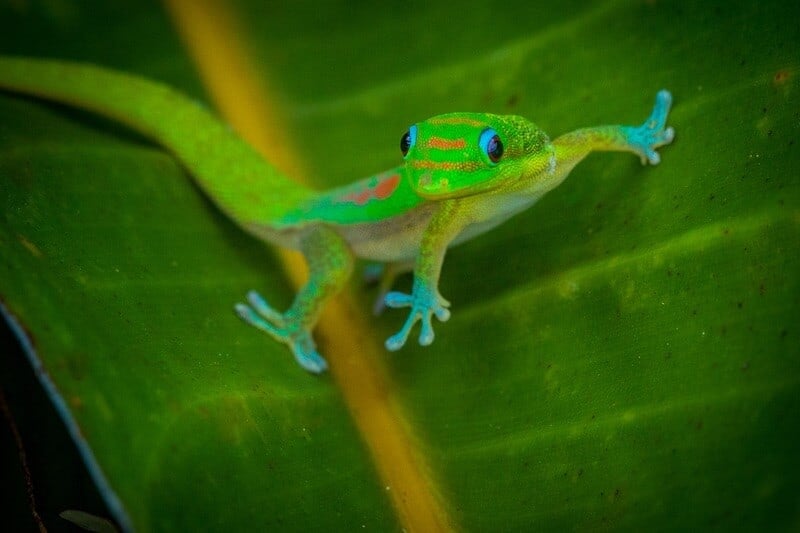
Enclosures don’t have to be massive. However, you should provide plenty of height. These types of geckos are big climbers and prefer to live in heavily-decorated spaces with a network of climbable surfaces. You can include large cork branches, thin vines, and everything in between.
All that said, you can get a bigger habitat if you want to. Unlike other types of geckos, gold dust day geckos don’t get overwhelmed or anxious in bigger spaces. They can adapt well to virtually any habitat you provide.
One thing you should avoid, however, is housing two males together. This species is wildly territorial and will fight to the death if given a chance. You can pair males and females together, but make sure you have a large enclosure to give each one their own space.
Crested Gecko
Another hugely popular species in the pet trade, the crested gecko is found all over the place. At one time, the species was thought to be extinct. But a rediscovery in New Caledonia resulted in a revival!
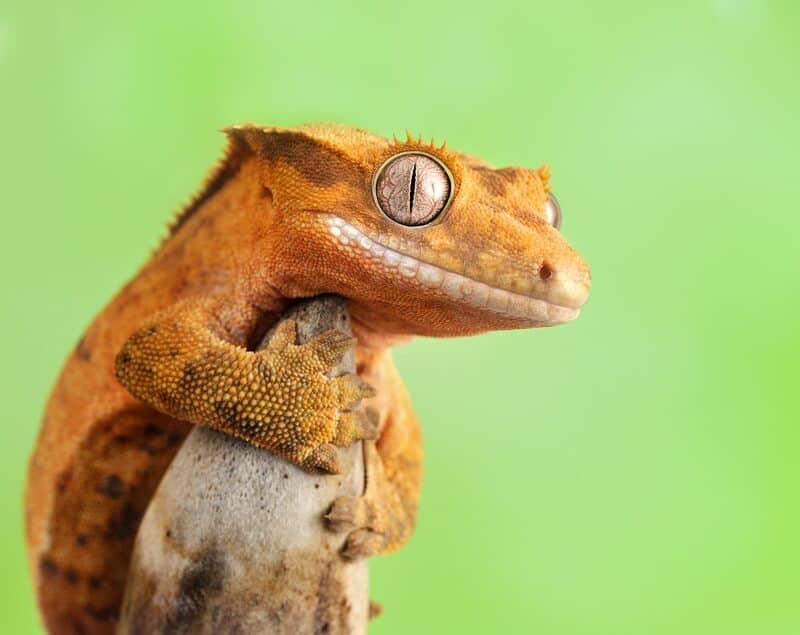
Today, they are one of the most beloved pet gecko species. Thanks to their gentle nature and hardy demeanor, they make great pets for reptile lovers young and old.
Crested geckos are available in a wide range of colors. Most are muted, featuring neutral tones of brown and tan. Though, more vibrant hues are possible, too.
The most defining feature of the crested gecko is its crest. Starting at the top of the head, the crest usually extends down to cover a portion of the back. The crest is fringed as well, creating a spiky appearance.
African Fat-Tailed Gecko
Native to arid environments of West Africa, the African fat-tailed gecko is an interesting species to own. It’s not as well-known as some other common types of pet geckos. But, these creatures have a lot to offer!
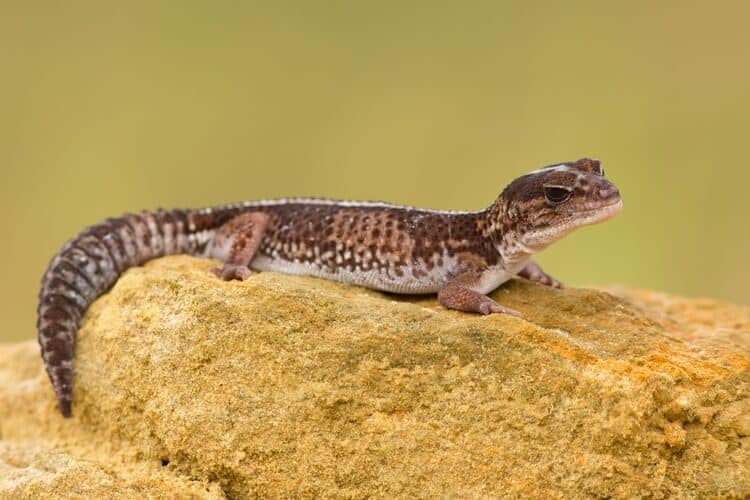
When it comes to temperament, these guys are pretty tame. Once they get comfortable in their new home, they will develop a sense of trust. At that point, they will enjoy handling. Many will even respond to your calls and visual cues!
All that said, Male African fat-tailed geckos can get very aggressive with each other. They are territorial and should never be kept together. This species does fine on its own. Or, you can house two females with a single male.
The African fat-tailed gecko is available in several morphs. Despite the skin color they carry, all specimens will have the signature bulbous tail. It stores fat for energy. They can lose it during a spar, but it can regrow with time.
Golden Gecko
Nocturnal and naturally suspicious of humans, the golden gecko is not as common as other types of geckos. They can be a handful to care for if you don’t have the right know-how and patience. But if you put in the work, these reptiles can be a rewarding pet!
Covered in yellow gold color, males are the more vibrant specimens. Most are uniformly colored, but you might also see some lizards with splotches of black on the back. Females aren’t as lustrous as males, but they may have hints of green.
As mentioned earlier, golden geckos aren’t big on handling. There are a couple of reasons for this. The first is their general anxious demeanor. These reptiles are fearful and may resort to biting if you try to force-handle them.
Some may even drop their tail!
Another issue is their delicate skin. The skin is prone to ripping, which makes handling risky.
Golden geckos can get comfortable over time and become more receptive to light handling. But even then, it’s better to err on the side of caution for their safety.
Chinese Cave Gecko
This mystical reptile is rare and highly sought-after. They are native to China and reside in caves throughout lowland rainforests. Most are found on the Island of Hainan.
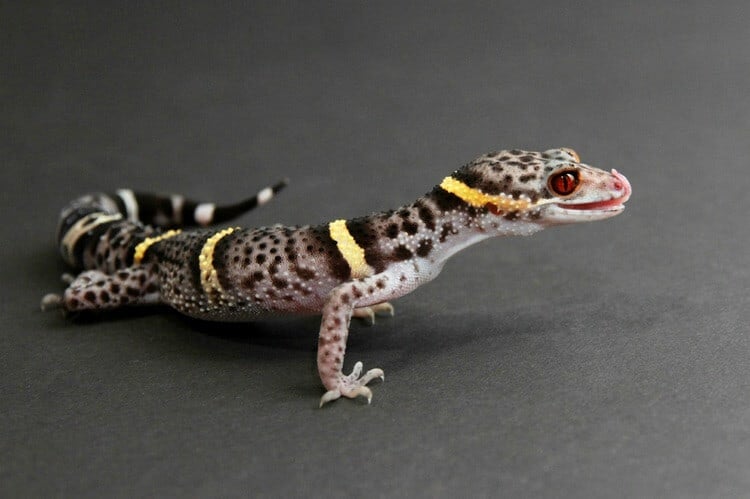
Chinese cave geckos have adapted well to their unique lifestyle. They’re nocturnal and feature dark-colored skin to blend in with their cave dwellings!
This type of gecko has a body that’s mostly purple. Spots of black cover the back. Meanwhile, prominent stripes of yellow wrap around the body and tail! The bright red eyes add the finishing touch.
Of course, you can’t judge a book by its cover. It looks scary and intimidating, but the Chinese cave gecko is shy as they come. They are rather skittish and anxious at first, but bites are rare.
Once they get more comfortable, you can start building some trust. With a bit of resilient “training,” these pet lizards will learn to stay calm when handled.
As a nocturnal species, don’t expect to see much of them during the day! They spend the daylight hours in hiding, only to come to life at dusk.
Chahoua Gecko
The chahoua gecko is a master of camouflage. In the wild, they spend most of their time clinging to dry trees. Thanks to their bark-like coloration, they blend in effortlessly!
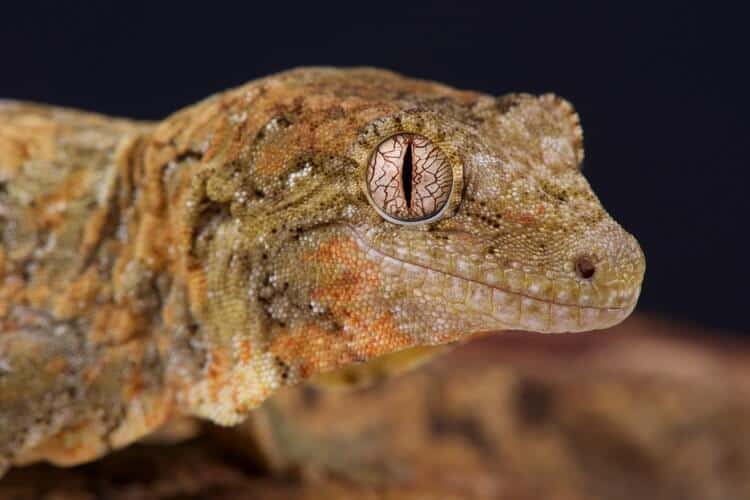
Most of the body is covered in varying shades of brown. A few darker lines here and there mimic the look of tree bark. Even the eyes are subtle, taking on a nearly identical color as the rest of the body.
As you can probably guess, chahoua geckos are arboreal. They need tons of climbing surfaces to stay happy and healthy. A tall enclosure is a must, too.
Chahoua geckos are surprisingly receptive to handling. Tolerance and overall temperament can vary from one lizard to the next. But, this species is very adaptable and can learn to stay calm with the right training.
As babies, they are little balls of energy! Younger lizards are very active and require a bit of work to keep under control.
Frog-Eyed Gecko
Frog-eyed geckos have a distinct look that differentiates them from other types of geckos. They’re sporting large, bulbous eyes and a noticeable round head. This species doesn’t have the triangular head like most types of geckos, resulting in today’s moniker.
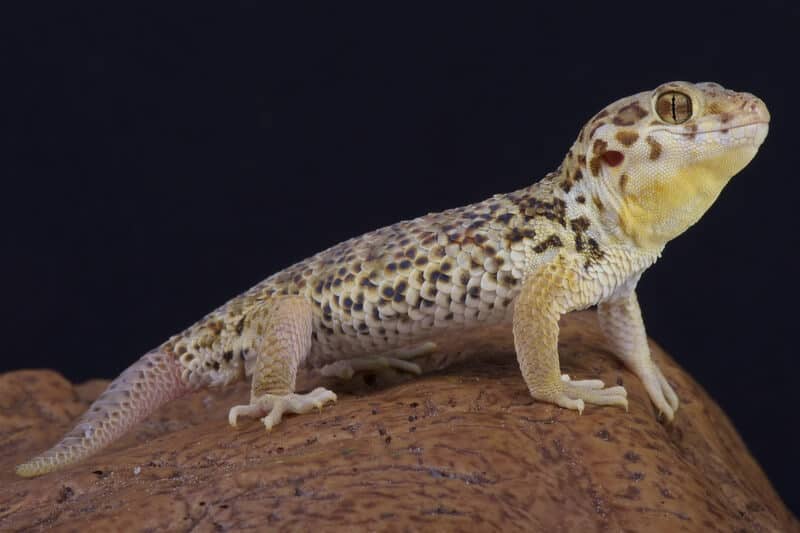
This lizard is native to dry shrubland. Some even live in the open desert. They come from the Middle East and Asia. Most of the specimens in the trade today are wild-caught.
Thanks to their wide distribution, there’s a lot of variety in terms of appearance. These guys don’t have any prized morphs, but subtle differences in their coloration reflect locality. As a result, the frog-eyed gecko is a favorite among collectors.
Keeping pet frog-eyed geckos healthy is pretty easy. Simple desert-style enclosures and a healthy diet of insects is all they need. They aren’t picky and will eat just about any insect you provide! Provide plenty of variety and some much-needed powder supplements, and they should do just fine in captivity.
Leachianus Gecko
The Leachianus gecko is a species you might see under many different names. It’s sometimes called the New Caledonian giant gecko. Additional smaller titles exist based on location and culture, too!
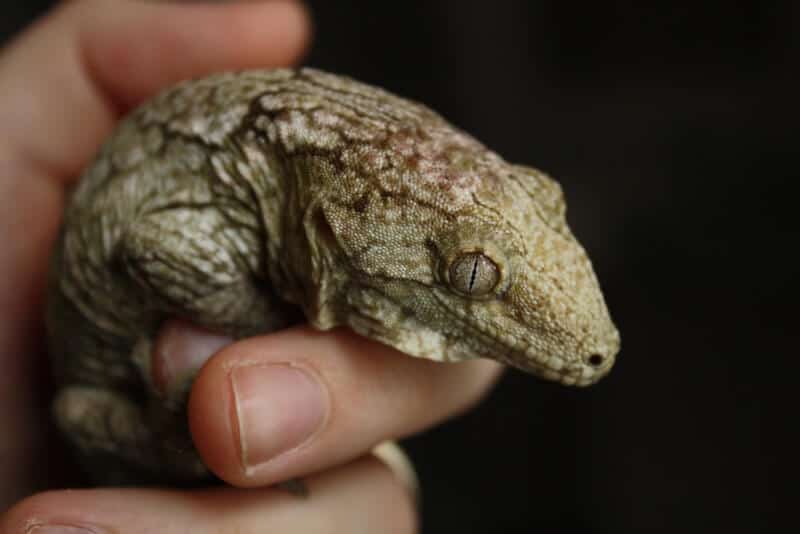
Whatever you call it, there’s one thing that separates this species from all others: Its size. The Leachianus is the largest living member of the gecko family. Adults can get as long as 17 inches.
Needless to say, caring for this species can be a handful. They require well-crafted homes with plenty of space. Leachinaus geckos are climbers, so vertical space is a must!
The good news is that these lizards are relatively peaceful. They prefer to spend their days blending in with their surroundings and relaxing.
Aggression can occur in some situations. When they are unfamiliar with other pet geckos, they may become territorial. Only keep bonded pairs together!
The same aggression can happen if you try to handle them too much. They’re not crazy about handling and may struggle to free themselves if you try to force it.
Tokay Gecko
With its beautiful coloration, tokay geckos are a species that many herpetology lovers fall in love with instantly! They are adorable creatures covered in vibrant colors. The main color is usually gray or light blue. But, spots of eye-popping orange, red, yellow, or green add tons of visual interest.
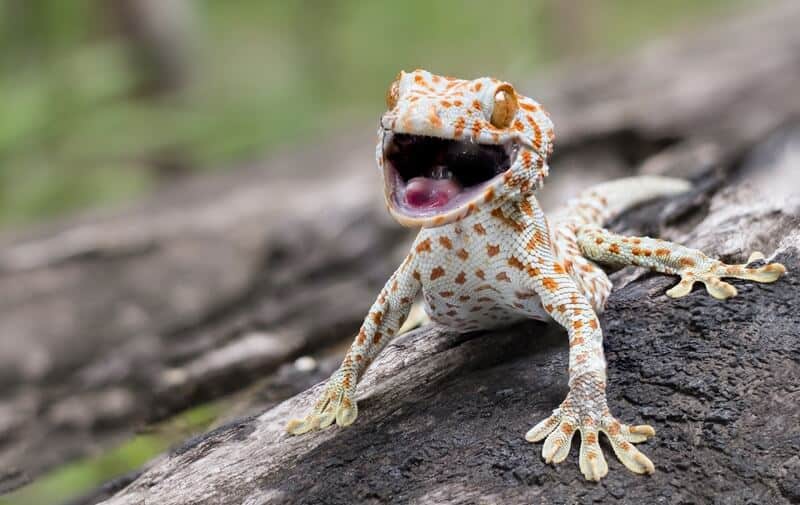
Beautiful looks aside, tokay geckos aren’t the easiest species to care for (they are not a pet for beginners). The reason for this is their temperament! Despite their adorable appearance, tokay geckos are notoriously territorial!
They fight all the time! Two males will fight to the death. Even seemingly innocent pairings may result in the occasional spar. During a fight, the geckos can drop their tails and experience a bevy of serious injuries.
You have to be careful about keeping more than one together. Keep a watchful eye and address aggressive behaviors as soon as possible.
As for handling, it’s all about trust. This type of gecko will bite you. They have small pointed teeth, so bites are painful. Tokay geckos can become docile and accept handling sessions as they get older, but it’s still risky.
Flying Gecko
Endemic to the jungles of Southeast Asia, the flying gecko is not a species you see very often. They are arboreal creatures that spend most of their time in the treetops. As their name would suggest, these lizards can “fly” from one tree to the next.
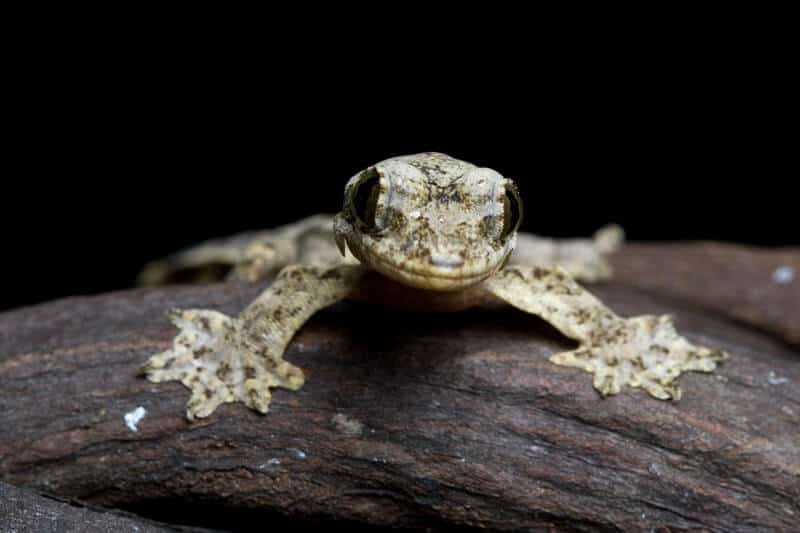
They’re sporting flappy skin, which catches the wind with every leap. Like a natural wingsuit, it helps the lizard sail to its next destination.
When it comes to appearance, flying geckos are very distinct. In addition to the floppy skin, they have large webbed feet! The feet provide even more control in the air.
The skin is brown and splotchy, making them master camouflage artists. The varying shades of brown blend in with tree barking, helping them disappear in natural environments.
Flying geckos are not a species you should handle. Not only are they skittish, but their skin is delicate and prone to injuries.
Satanic Leaf-Tailed Gecko
Check out this one-of-a-kind gecko species! Native to the mountainous rainforests of Madagascar, the satanic leaf-tailed gecko is the ultimate trickster! Its body looks like dead leaves, allowing it to hide and evade predators.
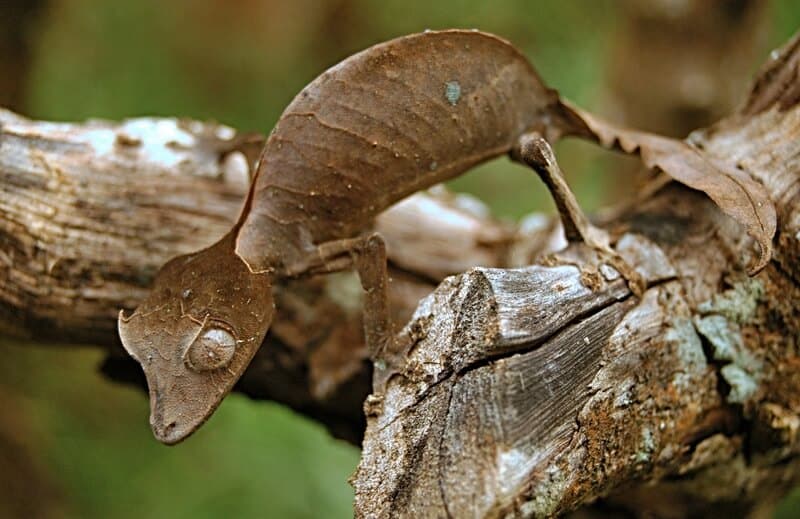
Don’t let the lizard’s name turn you off. The colorful moniker simply describes its appearance.
The head of this lizard is triangular in shape. However, subtle details push that “leaf” narrative even further! You might see horn-like protrusions around the dome and eyes.
Speaking of which, satanic leaf-tailed geckos often have red or white eyes with a signature vertical slit. Pair that with the thorny look of the head, and you have a scary-looking lizard!
The body of the gecko is just as convincing as the head. The crescent-shaped center mass features a subtle texture that mimics the veins of a leaf. Meanwhile, the fanned tail looks nearly identical to fallen foliage!
This type of gecko is truly a sight to behold. If you can get your hands on one, the satanic leaf-tailed gecko is sure to become a prized part of your collection.
Giant Day Gecko
Giant day geckos are beautiful and full of life! They measure about 12 inches long when fully grown. They’re not the biggest out there, but they still require large enclosures to stay healthy.
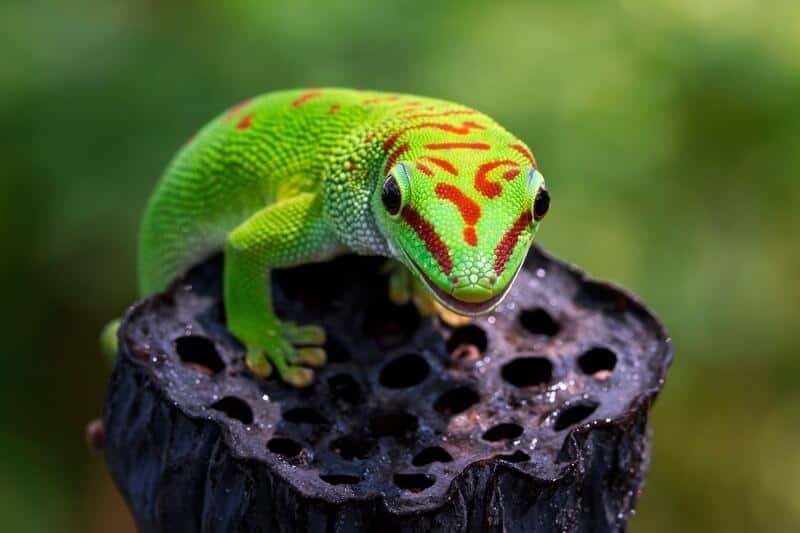
Arboreal by nature, giant day geckos need tons of climbing space. Thanks to their girthy size, you have to make sure that the branches and vines you use are beefy enough to support them!
These lizards are stunning. They feature vibrant jewel-toned green coloration with accents of red and yellow. Like most types of geckos, they feature padded toes that are built for climbing!
Giant day geckos are flighty and anxious. They aren’t big on handling, so it’s best to leave them be. If you attempt to force handling on them, you may fall prey to their unique defense mechanism.
When threatened, these lizards can let their soft skin slough off! This unique behavior lets the gecko slip away when feeling stressed.
Which Type Caught Your Eye?
Now that you know all of the best types of geckos you can keep as a pet, it’s time to pick your favorite.
If you’re a beginner, we recommend that you avoid the more difficult species on the list. There are plenty of beginner-friendly species to choose from instead!
Let us know if you have questions about any of the species we included on this list. We’ve created care guides for many of them already, so make sure you check out those resources as well!

